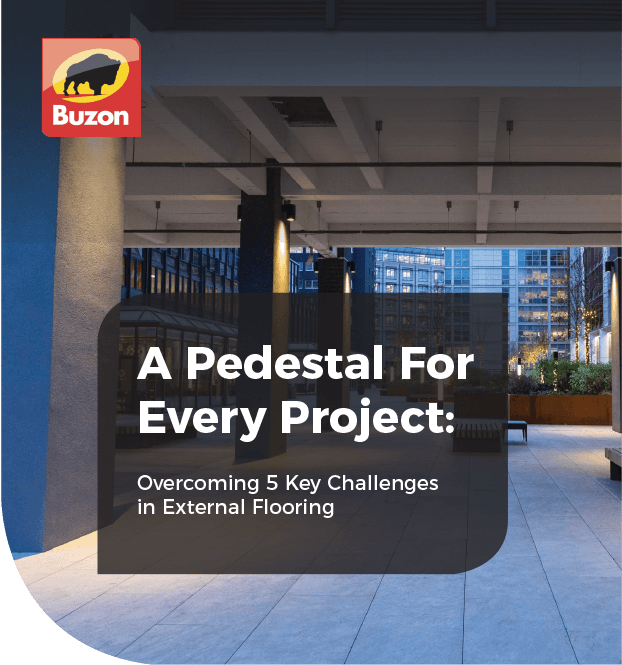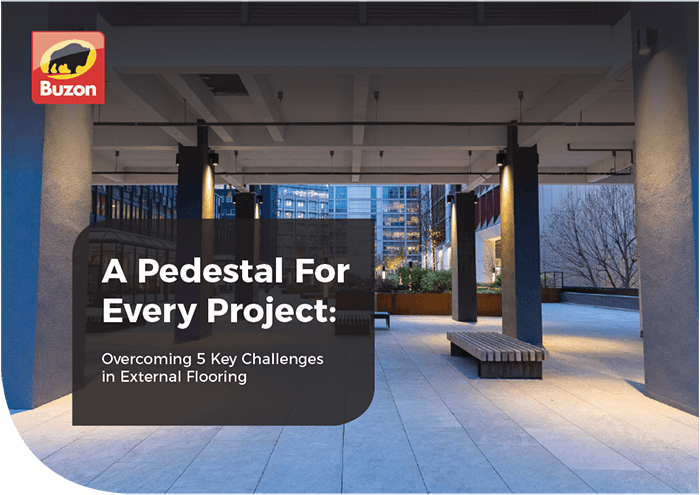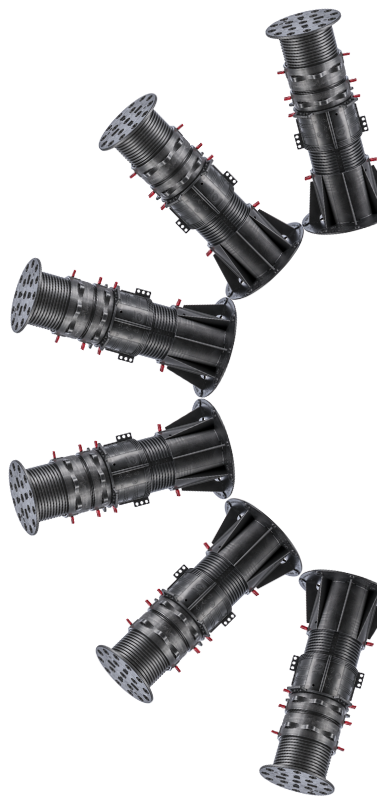So you’re planning to add a roof terrace to your building's plans or existing project. When planning a roof garden one of the first questions you may ask is, how much weight can a roof terrace hold?
The maximum weight a flat roof can bear is heavily dependent on the structure and makeup of the building itself.
However, when it comes to adding a roof terrace to an existing flat roof, it’s crucial you ensure the structure of the building can take the added weight of a roof terrace or garden.
This will always require seeking out advice from a trusted professional such as a structural engineer. However, there are considerations you can make which can ensure your roof terrace design minimises the amount of added weight.
Choosing A Pedestal System For Roof Terraces
As you may already be aware, a building’s flat roof is typically not flat at all. The slight incline present on a flat roof whether through the structure or use of tapered insulation, ensures that it is laid to fall, which allows water to run-off, facilitating drainage.
The incline, whilst minimal, can cause issues if it is not considered during the design process of your roof terrace. Fortunately, a quality adjustable pedestal system will compensate for any inclines using precision built-in slope corrective and height adjusting features.
The most commonly used system for roof terraces, pedestal systems raise the final level of the terrace floor, above the flat roof, membrane layers and any other obstacles such as utilities or service hatches. The design of these pedestals allows you to uniformly level the terrace and ensure the weight of the terrace is evenly distributed.
Adjustable pedestals or rail-based systems such as ALUrail, are cleverly designed to provide a robust, strong and lightweight platform. Made from recycled aluminium or plastic, depending on your chosen range, these decking systems are designed to provide superior load bearing.
When specifying pedestals, one of the most important factors is that they are strong enough for your chosen pavers or decking. Choosing a quality pedestal system will mean they have been fully compression tested, giving you insight into their maximum weight limit.
Some products such as the A-PED, also feature a uniquely designed, large, load-spreader plate base. The design of this plate base prevents damage to the membrane layer below it and makes it perfect for heavy pavers or decking materials such as concrete or porcelain.
Wind Uplift, Dead Loads & Live Loads
Roof terraces require a minimum amount of weight to ensure the waterproof layer is held in place. This is almost always achieved by the combination of the sub-frame and decking material.
The weight of the products also helps to solve wind uplift issues, as a heavy decking system is far less likely to be affected by heavy winds. Deck boards are usually attached to the pedestals themselves as they are lighter, whilst pavers aren’t due to their inherent weight. If wind uplift is going to be an issue on a particular site, there are more robust solutions.
When specifying your roof terrace, two other main considerations are your live loads and dead loads:
Live Loads: Also known as imposed loads, this refers to the weight which may change over time such as foot traffic.
Dead Load: Also known as static loads, are weight factors which remain constant over time. This includes the roof’s structural elements, pedestal systems and additions such as planters or furniture (if they are fixed).
Reducing Roof Terrace Weight Through Planters & Furniture
Contemporary roof terrace design, more often than not, will include a range of planters and biophilic designs. These planters are more than just a visual feature, they can also be used to divide areas, wall off zones and add verticality to roof terrace design.
Whilst it’s essential your roof terrace looks the part, the added weight of planters can be considerable, especially when the soil is saturated. When choosing your planters and furniture, consider how it fits into the wider design of the roof terrace.
Buzon has previously worked with companies like Furnitubes to design furniture and planters that fit into pedestal systems and wider roof terrace designs. Choosing planters and furniture which are comprised of strong but lightweight materials such as GRP can minimise load bearing on the roof terrace system.
Conclusion
Proper planning and research will help find the right products for your roof terrace system. Always consider the effect each product will have on the overall weight and load bearing on the roof terrace system.
For the strongest roof terrace support, consider adjustable pedestal systems which have been designed to distribute weight and increase load-bearing capacity through clever design.
Buzon’s pedestal ranges have been stringently tested to ensure quality performance and come with a range of features such as built-in slope correction, fire performance, paver and decking compatibility as well as being height adjustable to cope with voids from 11mm upwards.
If you’d like to discuss your requirements further, don’t hesitate to speak to an expert by calling us on +44 (0)20 8614 0874 or emailing info@buzonuk.com.














